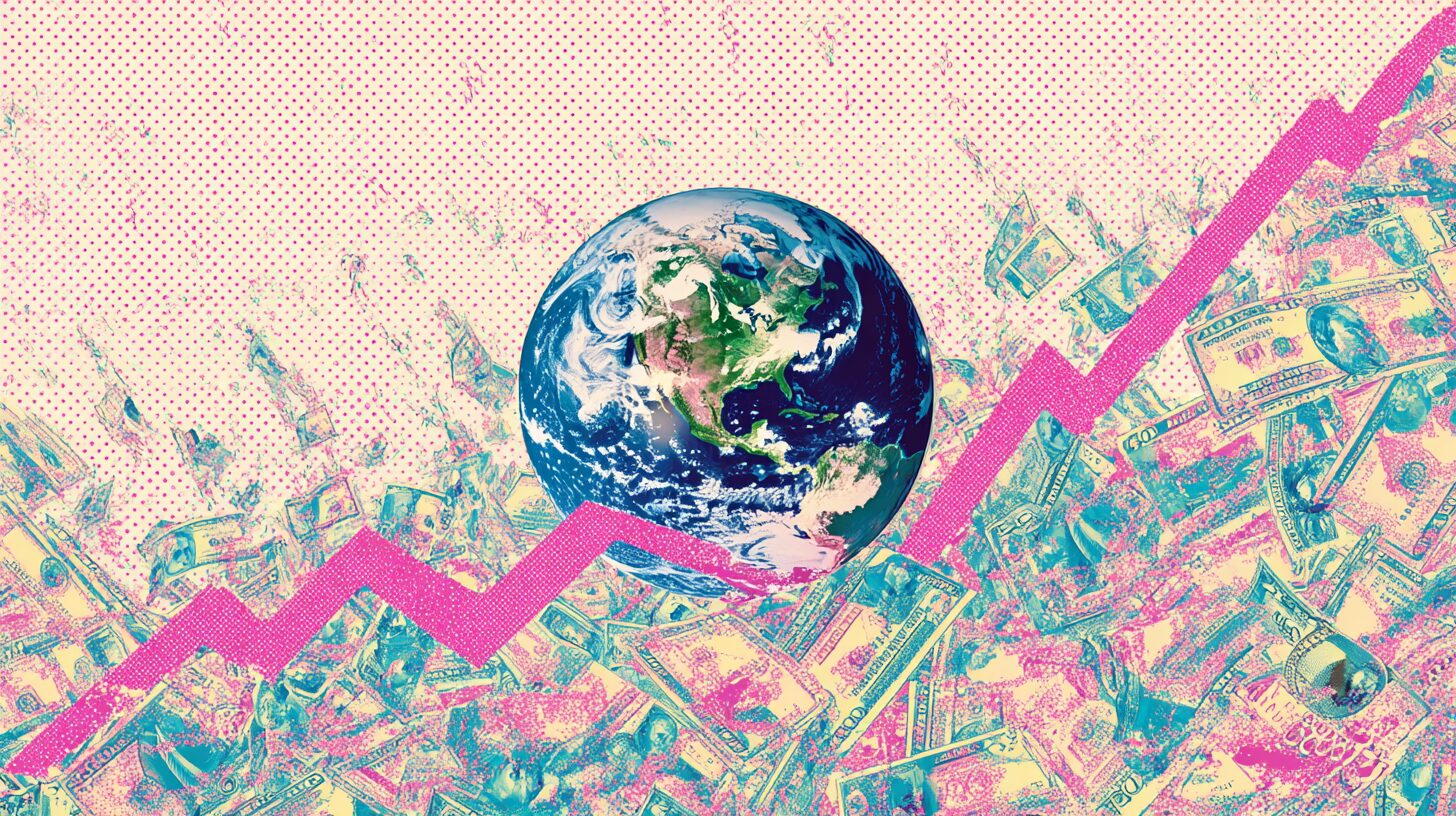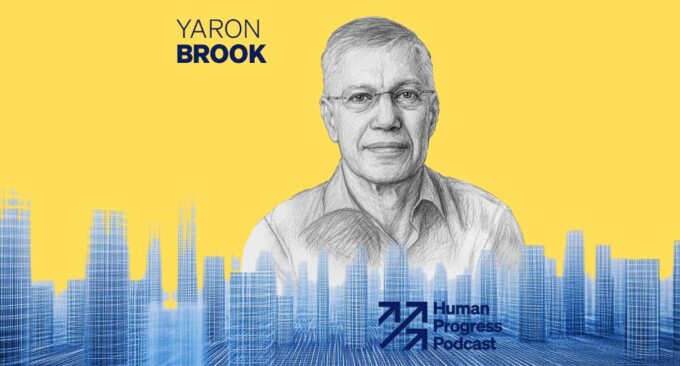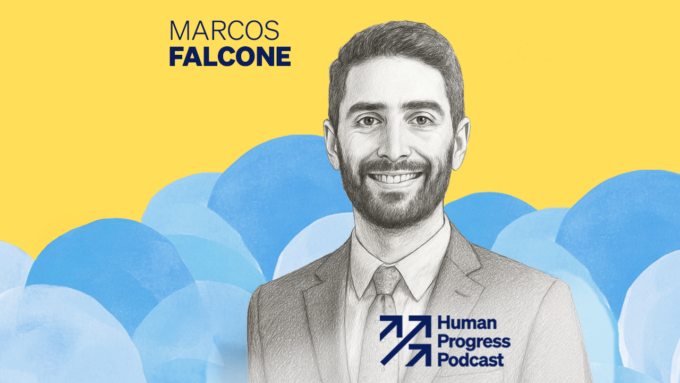Summary: Neoliberalism is often blamed for inequality, lost jobs, and social decay—but its record tells a different story. Emerging from the crises of the 1970s, market-oriented reforms revived growth, stabilized economies, and lifted hundreds of millions out of poverty worldwide. From Reagan and Thatcher to India and China, freer markets proved far more effective than state control. Critics confuse cultural discontent with economic failure, but the evidence shows neoliberalism succeeded at curbing inflation, fueling development, and creating global prosperity unmatched in any prior era.
Despite the polarization of our times, there is widespread agreement regarding the economic approach pursued by global elites between, roughly speaking, 1980 and 2008. If the term “neoliberalism” is used today, it is usually as an epithet for that era. Progressive critics including Joseph Stiglitz frame neoliberalism as a destructive ideology that widened inequality, weakened democracy, and commodified social life. To populist and national conservatives, neoliberal globalization hollowed out national industries, undermined communities, and empowered elites at the expense of ordinary citizens.
These critics are wrong. Neoliberalism emerged to deal with real problems, had strong intellectual foundations, and largely accomplished its goals. The anger at neoliberalism does not reflect its failures but instead represents scapegoating for complaints that are largely unrelated to economic issues. Critics of neoliberalism are wrong on economics, and there is little reason to believe that most of their preferred policies provide a better alternative.
Neoliberalism was a response to stagnation and malaise around the globe. Outside the Communist Bloc, the mid-20th century was dominated by Keynesianism in the West and state-led development in the Global South. Governments regulated industries, controlled capital flows, and expanded welfare states. By the 1970s, cracks appeared in this system: stagflation (low growth and high unemployment) in the United States and Europe and recurring fiscal crises discredited state-centered models. In the developing world, mounting debt and balance-of-payments problems forced governments to seek assistance from international institutions, setting the stage for policy change.
This atmosphere of crisis created an opening for market-oriented thinkers who had been marginalized in earlier decades, perhaps most notably the Chicago University economist Milton Friedman, who would win the Nobel Prize for economics in 1976 and become highly influential as a public figure advocating for deregulation. The law and economics movement, centered on figures including Ronald Coase, Richard Posner, and Gary Becker, also emerged at the University of Chicago, and they began to apply cost-benefit analysis to government regulations that had previously gone unquestioned. They called for taking efficiency concerns into consideration when interpreting legal doctrine.
Neoliberalism was characterized by taking seriously classical liberalism’s commitment to free markets and limited government. In the context of the world created by the 1970s, this approach meant slowing the growth in the money supply, deregulating industry, taking a skeptical approach to labor unions and industrial policy, opening markets up to the free flow of capital and trade, and in some cases, trying to shrink or at least prevent the expansion of the welfare state.
This cross-partisan convergence toward such ideas beginning in the late 1970s and continuing into the early 2000s has been called hegemonic neoliberalism. The first wave was identified with the right, associated with the tenures of Ronald Reagan (1981–1989) and Margaret Thatcher (1979–1990). The second came in the 1990s in the form of the “Third Way” leaders, notably Bill Clinton (1993–2001) and Tony Blair (1997–2007). Far from rejecting their conservative predecessors, they consolidated the new order: Clinton championed the North American Free Trade Agreement (NAFTA), welfare reform, and financial deregulation, while Blair’s New Labour accepted Thatcherite economic reforms.
The impacts of neoliberal ideology were felt well beyond the Anglo-American world. The International Monetary Fund and World Bank began to make financial aid to the developing world, much of it in disarray due to failed post-independence economic policies, conditional on adopting neoliberal reforms. Across Africa, Latin America, and Asia, governments privatized industry, cut public spending, and began to open up to international trade. The impacts of neoliberalism can clearly be seen in India and China, the two largest nations in the world. Beginning in late 1978, China introduced market mechanisms during the reign of Deng Xiaoping. In 1991, facing a balance-of-payments crisis, India implemented sweeping reforms under International Monetary Fund guidance. That involved cutting tariffs and the dismantling of the “License Raj,” which created strenuous permit requirements to import goods or operate a business. The old system placed limits on imports, set tariffs as high as 300 percent, and “made India virtually a closed economy.”
Neoliberalism made two major promises. It would put Western nations on a better economic track and also turbocharge development in the third world. On both accounts, it worked. The UK, in particular, saw growth increase in the 1980s and 1990s. Growth was about the same in the US in the 1980s and 1990s as it was in the 1970s, but with lower inflation, more stability, and lower unemployment. Refusing to follow Thatcher’s approach of taking on unions and limiting the expansion of the welfare state, the other major economies of Western Europe—France, Germany, Italy, and Spain—saw slower growth than either the US or the UK in subsequent decades. While growth rates in the Western world never returned to the those of the golden age of the 1950s and 1960s, the crisis of the 1970s had been overcome.
To put it another way, the US has been more neoliberal than the UK, which has been more neoliberal than most of the rest of Western Europe. And since the neoliberal revolution, the US has grown fastest, followed by the UK, and then Western Europe. Moreover, many economists believe that the main issue hindering even greater economic success in the UK and the US is their inability to build enough housing, due to government regulations getting in the way. That indicates that the US and the UK are suffering from too little, rather than too much, free market capitalism.
Together, China and India accounted for about 40 percent of the world population in 1980, and an even higher portion of the third-world population, so their trajectories are not just national stories but also tell us much about what has happened to the global economy. After market-oriented reforms, both nations experienced dramatic improvements in growth and poverty reduction. China’s opening up, beginning in 1978, unleashed decades of double-digit expansion, lifting more than 700 million people out of extreme poverty and transforming the country into the world’s second-largest economy. After India’s 1991 liberalization, annual growth rates increased, fueling the rise of a vast middle class and massive reductions in poverty. According to a 2022 World Bank report, China alone has accounted for nearly 75 percent of the global reduction in extreme poverty over the last four decades.
It is often said that China did not adopt all aspects of neoliberalism but pursued a hybrid model. Yet although China has grown impressively, it still remains much poorer than other East Asian nations. Its growth is slowing while its people are still at middle-income levels, whereas Hong Kong, Singapore, South Korea, and Taiwan maintained much higher growth until they became wealthier. China was able to improve its standard of living due to adopting pro-market reforms, and there is reason to believe that its growth would have been even more spectacular if it more fully embraced neoliberalism, which it hasn’t in part because free markets are potential threats to the centralized Communist Party control. Contrasting the nation with Hong Kong, Macau, Singapore, and Taiwan, the economist Garrett Jones notes, “China is, by far, the world’s poorest majority-Chinese country.” He also points to Chinese success in Southeast Asia and the New World, indicating that there are deep cultural factors and individual traits behind the remarkable consistency we see. With that context, China’s hybrid model doesn’t look nearly as impressive. It was beneficial for China to move away from communism, but its growth has likely occurred despite practices like large state-owned enterprises and government-directed resource allocation, rather than because of them.
After the fall of communism, Eastern Europe became another major laboratory for neoliberal reform. Beginning in the early 1990s, countries such as the Czech Republic, Estonia and Poland embraced “shock therapy,” which was characterized by rapid liberalization of prices, trade, and capital flows, coupled with the privatization of state-owned enterprises. The results were relatively painful in the very short run: output collapsed, unemployment soared, and inequality spiked. But over the medium to long run, many of these economies stabilized, integrated into the European Union, and experienced sustained growth. Poland in particular became a post-communist success story, avoiding recession during the 2008 financial crisis and seeing consistent income gains. Russia’s path was harsher, with extreme volatility marking the 1990s. Many reforms were started, then abandoned. It took about a decade and a half for Russian living standards to reach what they had been before the collapse of the Soviet Union. Still, across the region, neoliberal prescriptions defined the initial transition away from central planning, making Eastern Europe a critical chapter in the global diffusion of market-oriented policies.
The terrible state of Russia in the 1990s has often been cited as a blow against the ideas of neoliberalism. In fact, there is an argument to be made that in some ways Russia’s problems resulted from it not being willing to reform far or fast enough. After losing much of its economic base due to the collapse of money-losing state-owned enterprises, Russia carried the burden of subsidies, state pensions, and state wages into the post-communist era. Rather than cut spending it printed money, which led to runaway inflation, as standard economic doctrine predicted. Inflation would reach 2,500 percent in 1992. Moreover, when it came to privatization, many Eastern European states sold state assets to foreign investors rather than insiders, as was the case with Russia. That allowed the domestic producers to access better technologies, accounting practices, and so on.
If the evidence overwhelmingly suggests that neoliberalism has succeeded, why have intellectuals turned against it? It is important to understand that any idea that develops hegemonic status is likely to be challenged by aspiring elites. Neoliberalism dominated intellectual discourse, and the phrase began to be used as a stand-in for every problem that people saw in the world. Modernity is in many ways alienating, and every cultural, psychological, or public health issue that arose was placed at the feet of the dominant ideas of a previous era.
In fact, neoliberalism might have succeeded too well. In an influential 2016 paper, the political scientists Ronald Inglehart and Pippa Norris showed that as countries have become wealthier, politics has centered less on economic issues and more on cultural ones, like gay rights and immigration. While social class used to be a strong predictor of how people voted, that was no longer the case by the 2000s. In effect, when Western economies faced crises in the 1970s, people cared first and foremost about the economy, and neoliberalism largely solved the most pressing issues of that decade. Instead of declaring victory, Western publics began fighting about cultural issues. To be fair, the main cultural issue they fight over is widescale immigration, which has often been justified on neoliberal grounds. That is the only issue where widely held political values directly clash with neoliberal doctrine, and the idea that neoliberalism is not a cause of widespread discontent must be qualified by admitting that immigration is an exception to that rule.
When material fears come to the forefront, people go back to caring primarily about the economy, as was the case during the Great Recession in particular. But interestingly, there have been fewer recessions during the era of neoliberalism, freeing people to argue about cultural issues. From the nineteenth century through the Great Depression all the way up to the early 1980s, recessions were a regular occurrence in the United States and Europe. They often came every few years as policymakers struggled with inflationary cycles, more limited tools for stabilizing demand due to the gold standard, and eventually oil shocks. In the US, in the years immediately before the neoliberal consensus, recessions had become routine, with such downturns happening in 1969–1970, 1973–1975, 1980, and 1981–1982. That created a sense that economic instability was an unavoidable fact of life. Yet since the mid-1980s the frequency and severity of recessions have dramatically declined because central banks embraced credible anti-inflation policies, unions lost the power to hinder necessary structural adjustments to the economy, free trade allowed capital and resources to be quickly deployed to more efficient uses when necessary, and governments learned to use fiscal and monetary stabilization more effectively.
Both the US and much of Western Europe have experienced what economists call the “Great Moderation,” a period of steadier growth and fewer, shorter downturns. While the Great Recession of 2008 was a major exception, it stood out precisely because it interrupted what had become an era of relative economic stability compared to the turbulence of earlier decades. The only other serious economic crisis since the mid-1980s was the COVID-19 downturn, but that was due to government shutdowns and voluntary social distancing resulting from the pandemic. That said, the COVID-19 recession was followed by an exceptionally rapid recovery.
There has also been a greater societal turn towards pessimism, related to, but in a sense independent of, the culture war. The increasing use of smartphones and social media has been linked to greater anxiety and depression among young people. Trust in institutions—from Congress to the media and organized religion—has plummeted over the last several decades. Meanwhile, there has been no similar decrease in economic optimism. The University of Michigan Consumer Sentiment Index polls 500 Americans every month to measure their attitudes toward their personal finances and expectations. Consumer sentiment had collapsed in the late 1970s during stagflation but then shot up and remained high until the Great Recession. It picked up again as the economy recovered, before falling to around the level of the late 1970s during COVID-19, where it has been stuck since.
Note that 2020 was not only the year the pandemic began, but also the year when Joe Biden was elected president; Biden ran an administration that moved away from the neoliberal consensus and spent large amounts of money while adopting measures to ostensibly revitalize manufacturing. As predicted by the Harvard economist Larry Summers and other mainstream economists, that led to high inflation and, ultimately, contributed to the reelection of President Donald Trump. In other words, Americans were most optimistic about their finances during the period of hegemonic neoliberalism, and were more pessimistic before the consensus formed and after it broke down.
To take another indicator, the American National Elections Survey, conducted every two years since 1956, has been asking Americans whether they think their finances are likely to get better, worse, or stay the same over the next year. The two years with the greatest pessimism were 1974 and 1978, with more Americans saying they expected their finances to get worse than better. Yet from 1980 to the present, Americans have been more likely to respond that they expect to be better off than worse off. The increasing pessimism that we see regarding American governance and institutions does not apply to people’s individual finances. Data on sentiments and economic growth tell the same story.
Free markets do not have the answers to all of life’s problems, as postliberals of both the right and left have been correct to point out. Neoliberalism was a consensus that emerged from a long history of experimentation to address problems such as high inflation, high unemployment, and stagnant economic growth. It largely succeeded in its goals, and out-of-control housing prices in the era of NIMBYism indicate that policymakers have, if anything, not leaned in enough to the magic of markets. Turning back to strong labor unions, tariffs, and the state trying to decide which industries succeed or fail would simply make people around the world poorer without solving any of the underlying issues that inspire their discontent.
If someone wants to argue that neoliberalism itself is the cause of noneconomic social and political issues, the burden is on them to prove it. Simply pointing out that, for example, the birth rate or trust in government has decreased over the last few decades and indicting neoliberalism—which does not directly speak to such indicators—will not do. Causation must be established in order to justify a return to failed economic policies. At the very least, postliberals of the right and left should be able to point to countries that rejected neoliberalism and succeeded on the specific measures that they care about. But they cannot do that. Neoliberalism is an economic theory that has had positive economic results—it is not a religion that provides meaning, or ethical and spiritual guidance. Those concerned most with men’s souls should focus on shifting the culture in their preferred direction, rather than dismantling a system that has been working well for most of the world.




